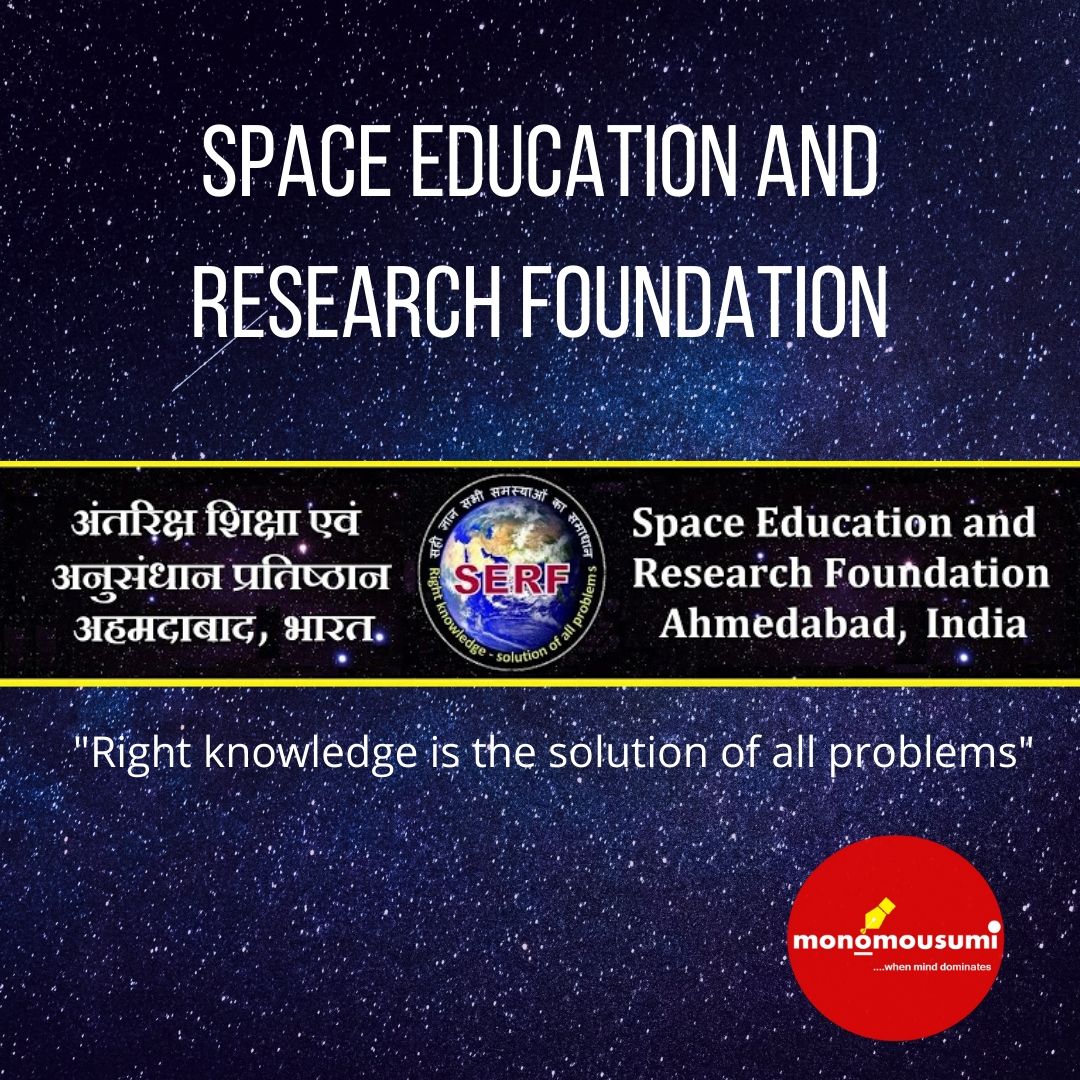
Space Education and Research Foundation is located at Bodakdev area in Ahmedabad, Gujarat. Space Education and Research Foundation (SERF) provides knowledge on Space Science. SERF aims to enhance education and research beyond the geographical boundaries and level of the person. This scientific collaboration for space education and research leads to the sustainable development of humankind. Professor Hari Om Vats is the director of SERF. It aims to spread knowledge and motivate students, research scholars, and faculties to present their knowledge. Their title statement is “Right knowledge is the solution of all problems”. This foundation works with the support of research scholars of Physical Research Laboratory, Ahmedabad. This organization plans educational webinars, seminars, training workshops, etc. even at the international level. SERF would consider providing help to those who have the ability and desire to progress but have no means.
Recently International Workshop on Space Science 2020 way held on May 18th to 21st May. In this workshop, they explained the solar cycle of sunspots, how solar flare comes up, the effects of a solar flare on our planet, physics behind the formation of aurora in poles, and many more with detailed study and experimental results. They use solar observatory and even satellites to collect data from the sun. Many research scholars all overall the world has participated and published their research work in the form of presentation. All the participants were used to make a brief report of 500 words on what they have learned through this workshop. This made the students revise the topic once again. Based on their reports, they shortlisted participants and certificates were provided to those students. Such workshops really help students to know about the scope in space research as well as for curious minds.
Many webinars were held on different topics like Sun Climate, E-Course of Atmosphere, Air Pollution, and Health, Remote Sensing Technology, Multi-disciplinary, Satellite Communication, Introduction to Meteorology, A course of Geodesy, Upper Atmosphere, Solar Physics, Star Formation, Space Weather, Artificial Intelligence, Space Debris, Geospatial Technologies, Satellite Meteorology, LIDAR, Evolution of Solar System, Atmospheric Chemistry and Climate Change, and Space Biology. These scholars are exploring many objects in space, find out possibilities of life in space, satellite navigation, origin and evolution of our solar system, exoplanet exploration, and many more. Exoplanets are those planets that orbits a star other than our sun. Many scientists and research scholars form Physical Research Laboratory, Space Application Center and Indian Space Research Organisation give the talk on these topics with detailed study. 22 such webinars are held till today and still going on. All the videos are uploaded on YouTube and presentation slides are available on the website.
The book on “Shooting Stars” in the form of What, When, and Why type of questions put by the curious mind. The questions are answered simply. There are good space science comic books in several languages including English and Hindi. The books were originally written in Japanese and were translated into several international languages. Hindi translation was done by Prof Hari Om Vats. He earned his Ph. D. from Gujarat University for his research work on the upper atmosphere. He has published 118 research papers in the scientific journals and guided 5 scholars for Ph. D. work till now. He has worked on research programs in several centers in the USA, Japan, and Brazil. He has given 265 popular talks in English and translated 8 Space Science Comic Books in Hindi such that layman can understand easily. These are available on the Scientific Committee on Solar-Terrestrial Physics (SCOSTEP) website. To popularization space science, he has visited several countries of Asia and the Pacific region, especially developing countries.
On 21st June 2020, a total annular solar eclipse was visible in few states of our country, while remaining states experienced a partial solar eclipse. A detailed lecture on eclipse was made to spread awareness, time of its visibility, precautions for viewers, reasons behind the formation of an eclipse, the zone of moons shadow on India as well as on neighboring countries. Along with this, he explained the types of a partial solar and lunar eclipse. A short video of solar eclipse-watching was also shown. The sun appeared like a ‘ring of fire’ in the sky during the solar eclipse. How to see the solar eclipse without UV glasses or a telescope was explained in detail.
By all these advantages, any student as well as a curious person to know about space can easily access the lectures and the study material developed by scientists and research scholars.
By PATEL MIHIR HEMANTKUMAR, Ahmedabad


